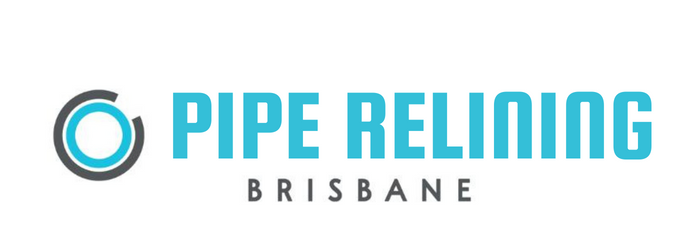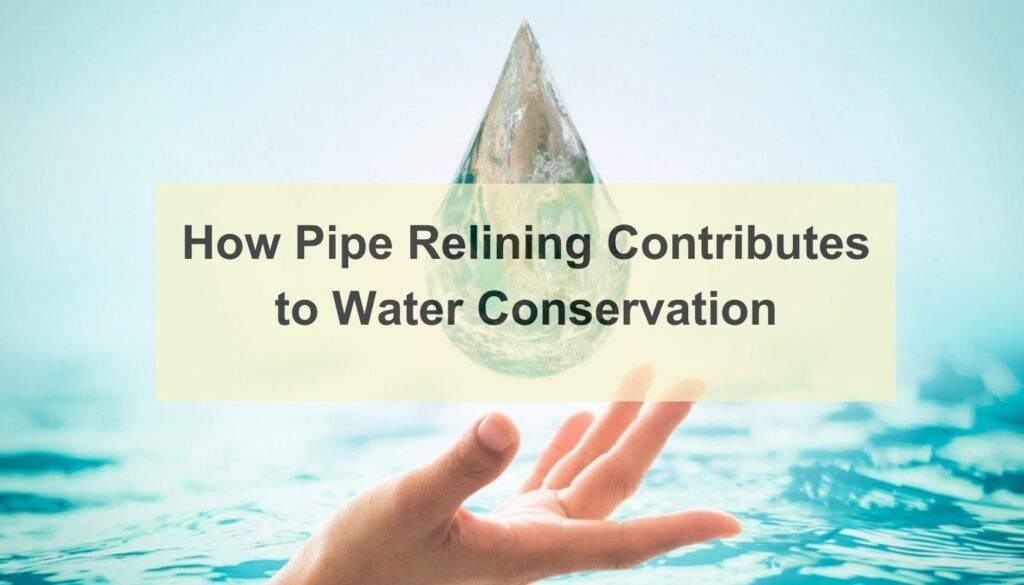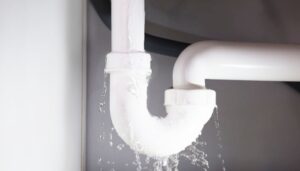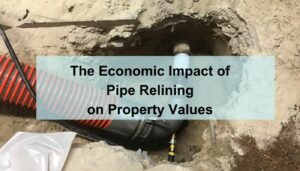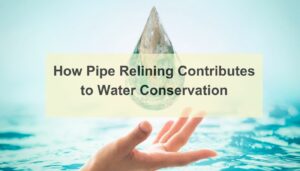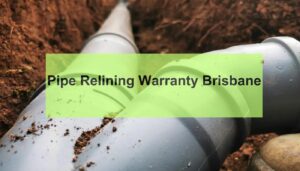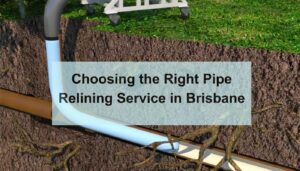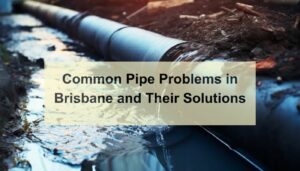Sustainable living demands the conservation of water, a paramount goal in today’s environmental context. Among the innovative approaches to achieve this is pipe relining, a technique that has transformed the way we manage our water resources. Unlike traditional methods of pipe repair, which often involve extensive excavation and complete pipe replacement, pipe relining offers a less intrusive, more efficient solution. This process involves inserting a new, durable lining inside existing pipes to repair damage, all without the need to dig up the old pipes. This not only preserves the structural integrity of our water distribution systems but also significantly reduces water loss due to leaks and breaks.
Water conservation is crucial for maintaining the ecological balance of our planet, ensuring the availability of this precious resource for future generations, and driving economic savings through efficient water use. With global water demand on the rise, it’s imperative to adopt strategies that not only meet our current needs but also safeguard water resources for the future. Pipe relining services emerge as a key player in this endeavor, offering a method to repair our water infrastructure with minimal waste and disruption.
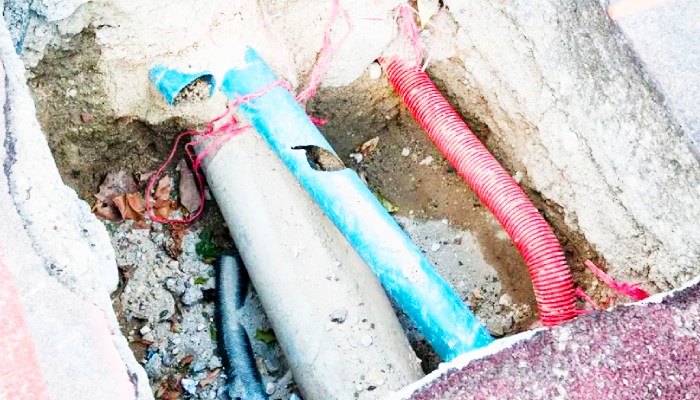
The Problem with Traditional Pipe Repair Methods
Traditional pipe repair and replacement methods have long been the standard approach to addressing water system failures. These methods typically involve excavating sections of pipe that are damaged, a process that can be both time-consuming and environmentally disruptive. The excavation not only damages the surrounding landscape, potentially affecting local ecosystems, but also requires a significant amount of water to clean and prepare the site, further exacerbating water wastage. Moreover, the process of excavating, replacing, and then reinstating the ground surface plumbing system is often lengthy, during which time water leaks continue unabated, leading to considerable water loss.
In addition to the environmental impact, traditional pipe repair methods pose significant inconveniences and costs. The disruption to daily life and local economies from pipe problems can be substantial, especially in urban areas where digging up roads and pavements is required. This not only affects traffic and businesses but also contributes to increased carbon emissions from diverted traffic and construction equipment.
The inefficiency and environmental footprint of traditional pipe repair methods highlight the need for alternative solutions. Pipe relining offers a promising answer, addressing the weaknesses of traditional approaches with a focus on water conservation and minimal environmental impact. As we move forward, understanding the limitations of past methods is crucial in embracing and advocating for innovative technologies like pipe relining, which not only resolve the immediate issues of pipe repair but also contribute to the larger goal of sustainable water management.
Understanding How Pipe Relining Works
Pipe relining, also known as cured-in-place pipe (CIPP) lining, represents a forward leap in infrastructure repair, specifically designed to tackle the challenges of water conservation and system efficiency.
Initial Inspection and Preparation
The process begins with a meticulous inspection of the existing pipes, typically employing closed-circuit television (CCTV) cameras. This step is crucial as it allows technicians to assess the extent of the damage and tailor the relining process accordingly. Following this assessment, the damaged pipes are thoroughly cleaned to remove any obstructions, ensuring a smooth surface for the lining to adhere to.
The Relining Process
After cleaning, the core of the relining takes place. A flexible tube, soaked in a special resin, is introduced into the damaged pipe. This liner is then expanded to fit snugly against the broken pipe itself’s interior walls. Heat or ultraviolet (UV) light is applied to cure the resin, which solidifies the liner, essentially creating a new, robust pipe within the old structure.
Advantages of Pipe Relining
The newly formed pipe is not only leak-proof but also resistant to corrosion, significantly extending the lifespan of leaking pipes in the water system often up to 50 years. Moreover, as this technique is performed beneath the ground, it spares the landscape from the scars of excavation, conserving the environment and the water otherwise needed for traditional repair methods.
Versatility and Efficiency
Pipe relining is distinguished by its adaptability to various pipe sizes and materials, including those used for water, and sewer lines, and gas lines. Its efficiency is further highlighted by the reduced repair time and minimized water loss, offering a cost-effective alternative to conventional repairs.
Understanding the intricacies of pipe relining reveals its immense contribution not only to solving immediate infrastructural problems but also to advancing the goals of sustainable water management. Through innovative techniques plumbing systems and materials, pipe relining emerges as a strategic response to the global challenge of water conservation.
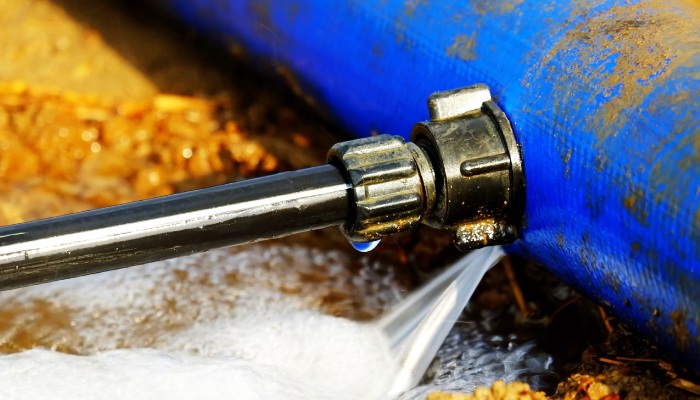
The Role of Pipe Relining in Reducing Water Leakage
The challenge of water leakage in public and private water systems is a significant concern worldwide, contributing to substantial water wastage and inefficiency. Pipe relining steps into this scenario as a highly effective solution, addressing the root causes of leakage with remarkable efficiency. This section delves into just how pipe relining contributes to water conservation and plays a pivotal role in conserving water through the reduction of leaks.
Targeting the Source of Leakages
Water leakage often stems from cracks, holes, and joint failures in aging pipes, a problem exacerbated by the traditional repair methods that only offer short-term solutions. Pipe relining, by contrast, provides a comprehensive and long-lasting fix by creating a seamless and durable new pipe within the old one. This “pipe within a pipe” approach not only seals existing leaks but also reinforces the existing pipe structure to prevent future leakages, directly contributing to significant water conservation.
Quantifying Water Conservation
Studies and real-world applications of pipe relining have demonstrated its effectiveness in dramatically reducing water loss. Municipalities and utilities that have implemented pipe relining report a marked decrease in non-revenue water (NRW) water that is produced and lost before it reaches the customer. By sealing off points of leakage and strengthening the entire pipe system and infrastructure, pipe relining contributes to the more efficient delivery of water, reducing the volume of lost water and thus conserving this vital resource.
Enhancing System Efficiency and Reliability
Beyond immediate water conservation, the benefits of pipe relining extend to the overall efficiency and reliability of the water distribution system. By mitigating leakage, water pressure within the system is maintained and stabilized, ensuring a consistent supply to end-users and reducing the need for costly and energy-intensive water treatment and pumping. This efficiency gain not only conserves water but also saves energy and reduces the environmental footprint of water distribution systems.
The Economic and Environmental Ripple Effect
The reduction in water leakage through pipe relining has a profound economic and environmental impact. Conserving water translates to lower operational costs for water utilities and, consequently, potential savings for consumers. Environmentally, it means less strain on natural water sources and a reduction in the energy and chemicals used in water treatment processes, aligning with broader sustainability goals.
Environmental Benefits Beyond Water Conservation
While the primary advantage of pipe relining is its significant contribution to water conservation, the method also offers a range of environmental benefits that extend far beyond the conservation of water alone. These additional advantages reinforce the role of pipe relining as a key player in the broader context of environmental sustainability and resource management.
Reduced Environmental Disruption
Traditional pipe repair methods often involve extensive excavation, leading to significant disruption of the natural landscape and local ecosystems. Pipe relining, in contrast, requires no such excavation, preserving the integrity of underground pipes and the environment above the pipes. This minimally invasive approach helps maintain local biodiversity by avoiding the destruction of habitats and reduces the carbon footprint associated with the use of heavy machinery.
Lower Carbon Footprint
The process of pipe relining has a considerably lower carbon footprint compared to traditional pipe replacement. Since there is no need for excavation, the energy consumption and greenhouse gas emissions associated with the repair process are significantly reduced. Furthermore, the materials used in the pipe relining process, such as epoxy resins, often have a lower environmental impact over their lifecycle compared to new pipes manufactured from metal or plastic.
Conservation of Raw Materials
Pipe relining contributes to the conservation of raw materials by rehabilitating existing pipes rather than replacing them with new ones. This approach not only extends the life of the existing infrastructure but also reduces the demand for new raw materials, thereby minimizing the environmental impact associated with their extraction, processing, and transportation.
Long-term Sustainability
The durability and longevity of relined pipes mean that repairs and replacements are needed less frequently, leading to a decrease in the environmental impact over time. This long-term sustainability benefit is crucial, as it contributes to the reduction of waste and the conservation of natural resources, aligning with global efforts to promote sustainable infrastructure and resource use.
Enhancing Water Quality
Pipe relining can also have a positive impact on water quality. By sealing off cracks and leaks, it prevents contaminants from entering the water supply, ensuring that water remains clean and safe for consumption. This is particularly important in areas where the integrity of aging water infrastructure poses a risk to public health and environmental quality.

Economic Implications of Pipe Relining for Water Conservation
The economic implications of pipe relining extend well beyond the immediate cost savings from reduced water loss. This innovative repair method presents a financially sustainable solution for municipalities, utilities, and property owners alike, by addressing the root causes of pipeline deterioration with minimal disruption and maximum efficiency.
Cost-Effective Repair Solution
Compared to traditional pipe replacement methods, pipe relining offers a cost-effective alternative due to its minimally invasive nature. The process eliminates the need for extensive excavation, reducing labor costs and the expenses associated with road closures, traffic management, and landscape restoration. Furthermore, the reduced downtime and quicker return to service mean that businesses and residents are less impacted, minimizing the economic disruption often associated with major infrastructure repairs.
Savings from Reduced Water Loss
For water utilities, the direct correlation between pipe relining and water conservation translates into significant financial savings. By curtailing water leakage, utilities can maximize their revenue from water delivery, reducing the volume of non-revenue water (NRW) and enhancing overall system efficiency. The conservation of treated water also means that utilities can defer or avoid the costs associated with expanding water treatment facilities to meet demand, offering long-term financial benefits.
Long-Term Infrastructure Investment
Investing in pipe relining is a strategic long-term infrastructure investment. The durability and extended lifespan of relined pipes mean that municipalities and utilities can anticipate lower maintenance and repair costs over time, compared to traditional pipes. This longevity also reduces the frequency of future repairs, providing more predictability in budgeting and financial planning for water infrastructure maintenance.
Environmental Cost Savings
The environmental benefits of pipe relining, such as reduced carbon emissions and conservation of raw materials, also bear economic implications. By minimizing the environmental impact of pipe repairs, municipalities and utilities may qualify for environmental credits or subsidies, and avoid potential fines and remediation costs associated with environmental damage. Additionally, the positive environmental impact of pipe wall, can enhance the public image of these entities, potentially leading to increased community support and funding opportunities for sustainable infrastructure projects.
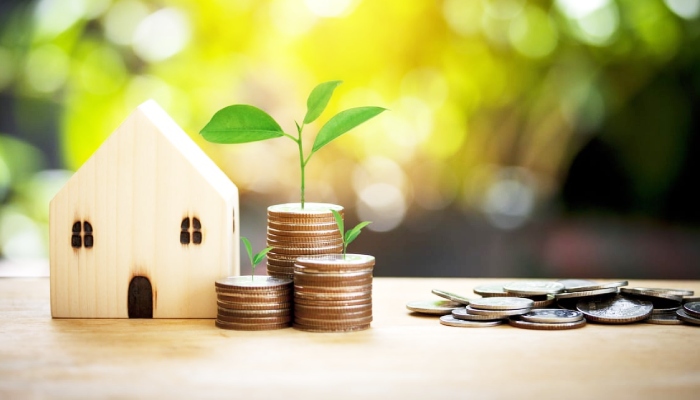
Enhancing Property Values
For property owners, the implementation of pipe relining can contribute to the preservation, if not enhancement, of property values. Properties with modernized, efficient water systems are more attractive to buyers and renters, reflecting a commitment to sustainability and long-term cost savings. Moreover, the avoidance of extensive excavation preserves the aesthetic and structural integrity of the property, further supporting its market value.
Navigating Challenges and Maximizing Opportunities in Pipe Relining
Adopting pipe relining offers substantial benefits for water conservation and infrastructure efficiency, yet it requires thoughtful navigation through certain challenges to maximize its potential. Here’s how stakeholders can positively approach and leverage these challenges to their advantage.
Strategic Investment Planning
The initial investment in pipe relining, while perceived as high, represents a strategic opportunity for long-term savings and efficiency. By conducting thorough cost-benefit analyses, municipalities and utilities can uncover the substantial long-term savings associated with reduced water loss, lower maintenance costs, and extended infrastructure lifespan. Financing strategies, such as leveraging green bonds or seeking governmental grants, can also alleviate upfront costs, turning financial challenges into opportunities for sustainable infrastructure development.
Embracing Technical Advancements
While technical limitations exist, they also push the industry toward innovation and improvement. The suitability of pipe relining for different pipe materials and conditions encourages continuous advancements in relining technologies and materials. By staying informed about and adopting the latest developments, stakeholders can extend the applicability and cost effectiveness of pipe relining solutions, turning potential limitations into opportunities for broader impact.
Investing in Skills Development
The requirement for a skilled workforce underscores the importance of investing in training and development. This investment not only ensures the success of relining projects but also contributes to the growth of local employment and the development of a skilled labor market specialized in modern infrastructure solutions. Collaborating with educational institutions for certification programs or offering apprenticeships can cultivate the necessary expertise, transforming the challenge of skilled labor scarcity into an opportunity for community and economic development.
Regulatory Engagement and Environmental Stewardship
Navigating regulatory and environmental compliance is an opportunity for leadership in environmental stewardship. Proactive engagement with regulatory bodies and commitment to high environmental standards can set a precedent for industry practices, enhancing the reputation of municipalities and utilities as pioneers in more sustainable practices in water management. Moreover, compliance challenges can drive innovation in environmentally friendly relining materials and practices, reinforcing the role of pipe relining in conservation efforts.
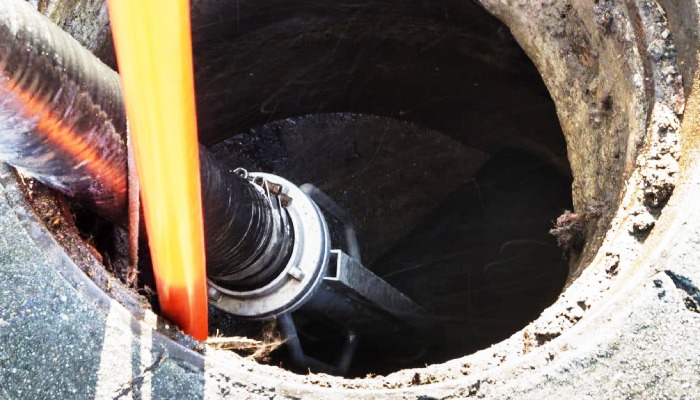
Enhancing Community Relations through Communication
Effective communication and community engagement present an opportunity to strengthen public trust and support for infrastructure projects. Transparently sharing the benefits, safety, and efficiency of pipe relining can alleviate public concerns and foster a sense of community involvement in sustainability efforts. This positive public perception can facilitate smoother project implementation and highlight the role of communities in achieving water conservation goals.
In transforming challenges into opportunities, stakeholders can fully harness the potential of pipe relining to contribute significantly to sustainable water management and infrastructure resilience. Through strategic planning, embracing innovation, investing in human capital, engaging with regulatory frameworks, and enhancing community relations, the path forward with pipe relining is not only feasible but also highly advantageous for the environment, economy, and society.
Conclusion
Pipe relining emerges as a transformative solution for water conservation and infrastructure sustainability. By efficiently sealing leaks and extending pipe life without significant environmental disruption, it offers a forward-looking approach to managing our precious water resources. The economic and ecological benefits underscore its value in creating a resilient, water-wise and sustainable future. As stakeholders navigate its challenges with innovation and collaboration, pipe relining stands as a testament to our commitment to preserving water for generations to come. In the journey toward sustainable water management, pipe relining is not just a method it’s a mission.
